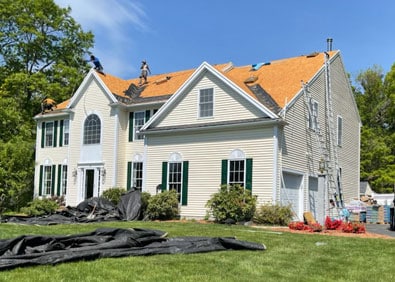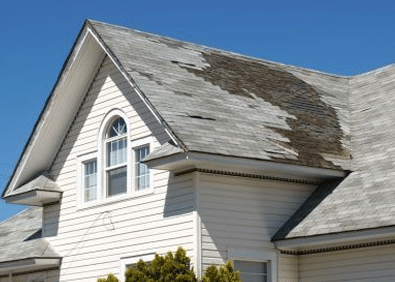
How to detect roof leaks can save you from serious headaches and costly repairs. Spotting a leak early keeps your home safe and dry. Here’s a quick guide:
Acting quickly when you first notice these signs can prevent more extensive (and expensive) damage in the future.
I’m Jason Hedtler, with over 20 years of experience in roofing. At Roof Experts, helping Massachusetts homeowners learn how to detect roof leaks is my specialty. Our expertise ensures your roof is always in top condition.
Essential how to detect roof leaks terms:
– best roof sealant for leaks
– how to fix a leaking flat roof
– roof flashing repair
Detecting a roof leak early can save you from a lot of trouble down the line. Here are some signs of a roof leak to watch out for:
Water stains are typically the first clue. These often appear as dark or wet spots on your ceiling or walls. They might look like coffee rings and shouldn’t be ignored.
If you notice sagging or bulging in your walls or ceiling, it could be a sign of water pooling behind them. This is a more severe indicator that the leak has been around for a while.
A musty odor, especially after rainfall, is a red flag for hidden water damage. This smell often accompanies mold growth, which can be harmful to your health.
Mold is a telltale sign of moisture problems. It often appears in damp corners, on ceilings, or behind furniture. Mold not only damages your home but is also a health hazard.
Perhaps the most obvious sign is water dripping from your ceiling. If you see this, act immediately. Place a container to catch the water and investigate further to prevent more damage.
Being aware of these signs can help you catch leaks before they cause significant damage. In the next section, we’ll dive into how to detect roof leaks using various methods and tools.
Spotting a roof leak before it causes major damage can save you time and money. Here’s how to do it effectively.
Start your leak detection by examining the attic. Look for moisture signs like dark spots or water stains on the wood. Mold growth is another red flag, indicating long-term moisture exposure. Damaged insulation, which may appear soggy or compressed, can also point to a leak.
Use a flashlight to help you see better. The light can reflect off wet surfaces, making them easier to spot. Be thorough, checking every corner and crevice.
The garden hose method is a simple way to identify leak sources. Begin by having an assistant inside the attic with a flashlight. Slowly spray water on the roof, focusing on small sections at a time. Your assistant should look for any signs of water dripping or moisture appearing inside.
This method helps pinpoint the origin point of the leak, making it easier to address the problem directly.
A thorough inspection of your roof can reveal potential leak sources. Check for damaged shingles, which might be missing, cracked, or curled. Remove any damaged shingles with a putty knife and replace them promptly.
Next, examine the step flashing where the roof meets walls or chimneys. These areas are prone to leaks if the flashing is damaged or improperly sealed. Also, inspect roof vents and roof valleys for any signs of wear or damage.
Pay special attention to chimneys, as the seals around them can deteriorate, leading to leaks. Ensuring all these components are in good condition is crucial for a leak-free roof.
For challenging leaks, advanced technology can be a game-changer. Infrared cameras detect temperature differences, revealing hidden moisture areas that might not be visible to the naked eye. This method is highly effective for finding elusive leaks.
Drone inspections offer a safe and efficient way to examine your roof from above. Drones can capture high-resolution images, allowing you to spot damaged areas without climbing onto the roof.
Thermal imaging is another powerful tool. It helps identify leaks by detecting heat patterns, which can indicate moisture presence. These advanced methods are particularly useful for large or complex roofs.
By using these techniques, you can effectively detect roof leaks and address them before they cause extensive damage. In the next section, we will explore the common causes of roof leaks and how to prevent them.
Understanding the common causes of roof leaks is crucial for preventing them. Here are the main culprits:
Missing shingles are one of the most obvious signs of potential roof leaks. Shingles protect your home from water, and when they’re missing, water can seep in easily. This can happen due to aging, wind, or improper installation. Regular checks can help you spot missing shingles early and replace them before they cause problems.
Flashing is the material used to seal joints and prevent water from entering through gaps. Over time, flashing can become cracked or corroded, especially if it was installed improperly. Damaged flashing around chimneys, skylights, or vents can lead to leaks. Inspecting and repairing flashing is essential to keep your roof watertight.
Sometimes, the issue starts with how the roof was installed. If the installation was not done correctly, problems like poor nail placement or inadequate underlayment can arise. Improperly installed roofs are more susceptible to leaks and other issues. Always hire reputable professionals to ensure your roof is installed correctly.
Severe weather can wreak havoc on roofs. Storms with high winds, heavy rain, or hail can damage shingles, flashing, and other roof components. After a storm, it’s wise to inspect your roof for any signs of damage. Quick action can prevent small issues from becoming major problems.
Trees near your home can be both beautiful and problematic. Tree branches that scrape against your roof can wear down shingles and lead to leaks. In some cases, falling branches can puncture the roof. Regularly trimming branches and keeping trees well-maintained can help prevent this type of damage.
Clogged gutters are often overlooked but can lead to roof leaks. When gutters are blocked with leaves and debris, water can overflow and seep into the roof. This can worsen existing issues, especially if the roof has other vulnerabilities. Cleaning gutters regularly ensures proper drainage and reduces the risk of leaks.
By understanding these common causes, homeowners can take proactive steps to maintain their roofs and prevent leaks. In the next section, we will discuss how to fix common roof leaks efficiently.
When it comes to fixing roof leaks, acting quickly is key. Here are some straightforward solutions to tackle common problems:
Flashing is vital for keeping your roof watertight. If it’s damaged, resealing is essential. Start by inspecting areas around chimneys, vents, and skylights. Use a high-quality roof sealant to cover any cracks or gaps. This will prevent water from sneaking in through these vulnerable spots.
Missing or damaged shingles can lead to leaks. To replace them, gently lift the surrounding shingles and remove the nails of the damaged one. Slide in a new shingle and secure it with nails, then apply roofing cement for extra protection. Regularly check your roof for any signs of shingle damage, especially after storms.
Clogged gutters can cause water to overflow and damage your roof. To fix this, clean your gutters regularly. Remove leaves, twigs, and debris to ensure water flows freely. Consider installing gutter guards to minimize future clogs. This simple task can prevent many roof-related headaches.
If you spot a leak but can’t fix it immediately, temporary tarping is a quick solution. Cover the affected area with a waterproof tarp, securing it tightly with nails or weights. This will keep water out until you can make permanent repairs. It’s a handy trick for emergency situations.
Sometimes, a leak might be too complex for DIY fixes. In such cases, it’s wise to call in the pros. A professional repair ensures the job is done right. Experts can assess the damage, identify hidden issues, and provide lasting solutions. For homeowners in Massachusetts, reaching out to a trusted local roofing service can save time and prevent further damage.
By addressing these common issues, you can protect your home from water damage and extend the life of your roof. In the next section, we’ll explore how to prevent future leaks with regular maintenance and smart practices.
Preventing roof leaks is all about being proactive. Simple, regular maintenance can save you a lot of trouble down the road.
Start with regular inspections. Check your roof at least twice a year, ideally in spring and fall. Look for any signs of wear and tear like missing shingles or damaged flashing. After a storm, do a quick check for any new damage. This way, you catch problems before they turn into leaks.
Cleaning gutters is crucial. Clogged gutters can cause water to back up and seep under your roof. Make it a habit to clear out leaves, twigs, and debris. Install gutter guards to help keep them clean. This simple task can prevent a lot of water damage.
Sealing joints is another important step. Over time, the sealant around chimneys, skylights, and vents can crack. Inspect these areas and reapply sealant as needed. This helps keep water out of your home’s vulnerable spots.
Don’t forget to trim trees near your roof. Overhanging branches can scratch and damage shingles. In storms, they can break off and cause serious damage. Keep branches trimmed back to avoid these risks.
Finally, consider professional maintenance. A roofing expert can spot issues you might miss. Schedule a professional inspection at least once a year. They can provide valuable advice and perform any necessary repairs. For homeowners in Massachusetts, Roof Experts offers reliable services to keep your roof in top shape.
By following these preventive measures, you can protect your home from leaks and extend the life of your roof. Next, we’ll dive into frequently asked questions about roof leak detection.
Roof leaks can be caused by a variety of issues. Roof age is a big factor. As roofs get older, shingles can dry out and become less effective. Poor maintenance also plays a role. If you don’t regularly check and maintain your roof, small problems can turn into big leaks.
Clogged gutters are another common cause. They can lead to water overflow, allowing moisture to seep under the roof. Ice dams can form in winter, causing water to back up and leak through the roof. Damaged flashing around chimneys and vents can let water in if it’s cracked or corroded. Roof vents and chimney cracks also provide entry points for water if they are compromised.
Sometimes, what seems like a roof leak might actually be a plumbing issue. A high water bill can be a clue. If your bill spikes without explanation, it might mean there’s a plumbing leak. You can perform a water meter check by turning off all water sources and seeing if the meter still runs.
Mold growth and damp spots can appear with both roof and plumbing leaks, but their location can offer hints. If you see moisture around interior walls or ceilings, it could indicate a roof leak, especially after rain. Conversely, damp spots near plumbing fixtures may point to a plumbing issue.
Finding the exact location of a leak can be tricky, but there are several methods to try. Start with an attic inspection. Use a flashlight to look for water stains or mold. Check the insulation for dampness, which can lead you to the leak’s source.
An exterior inspection is also essential. Look for damaged shingles, broken flashing, or gaps around vents and chimneys. If you’re still unsure, try the water spray test. This involves spraying water on different sections of the roof while someone inside the attic watches for drips.
For more precise detection, consider using professional tools like infrared cameras, which can identify moisture not visible to the naked eye. For homeowners in Massachusetts, Roof Experts can provide expert leak detection services using these advanced methods.
At Roof Experts, we understand the importance of keeping your roof in top condition. A well-maintained roof not only protects your home but also helps prevent costly repairs down the line. For homeowners in Massachusetts, regular roof inspections are crucial to catching problems early and avoiding extensive damage.
Our team of experts is ready to assist with professional inspections and repairs. We use advanced tools and methods, like infrared cameras and drone technology, to accurately detect leaks and other issues. This ensures we can provide quick and effective solutions, so your home stays safe and dry.
Don’t wait until a small issue becomes a major problem. By partnering with us for your roofing needs, you can enjoy peace of mind knowing your home is in capable hands. Whether it’s a minor repair or a complete roof replacement, we’re committed to delivering high-quality workmanship and exceptional customer service.
Contact us today to schedule your roof inspection and protect your home from future leaks and damage. We’re here to help you keep your roof in peak condition for years to come.

Roof Installations

Roof Replacements

Roof Repairs